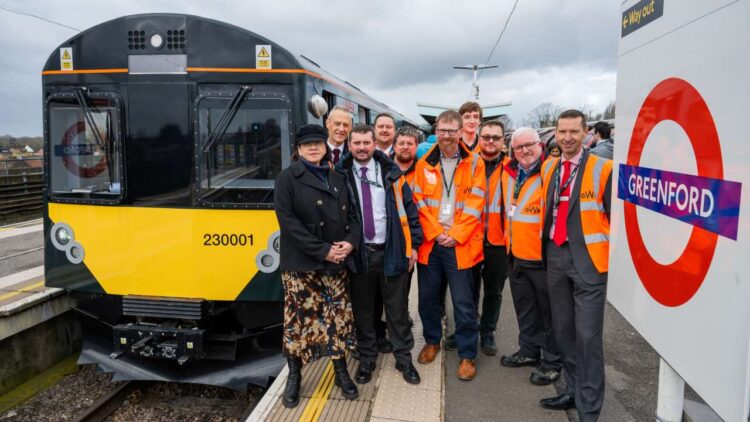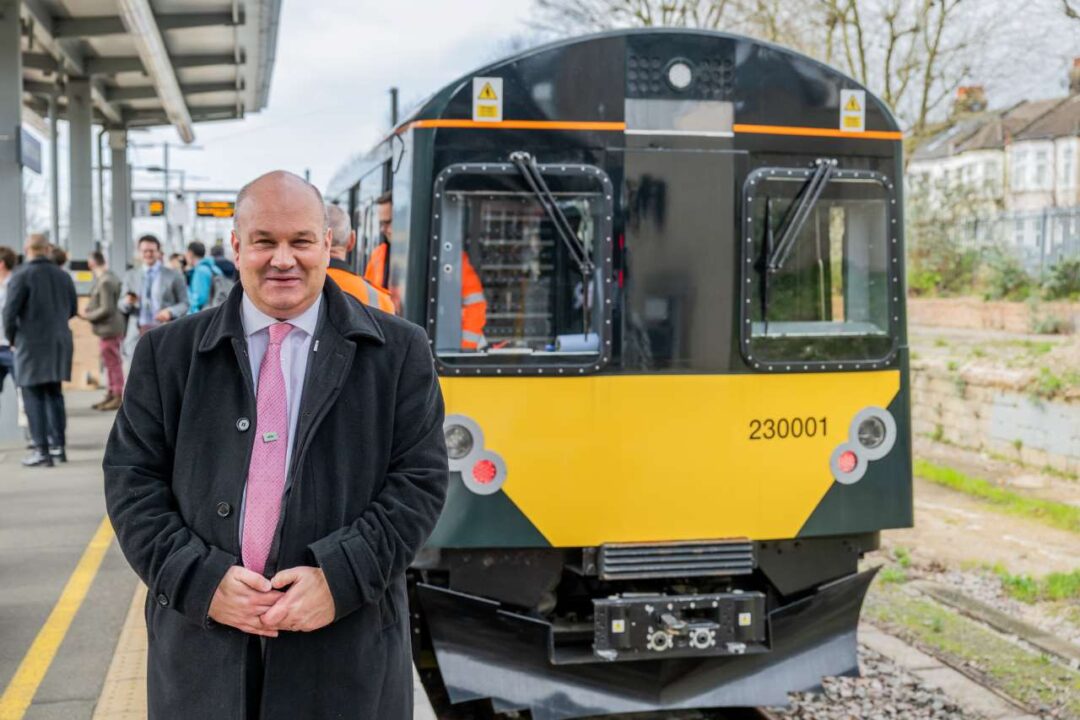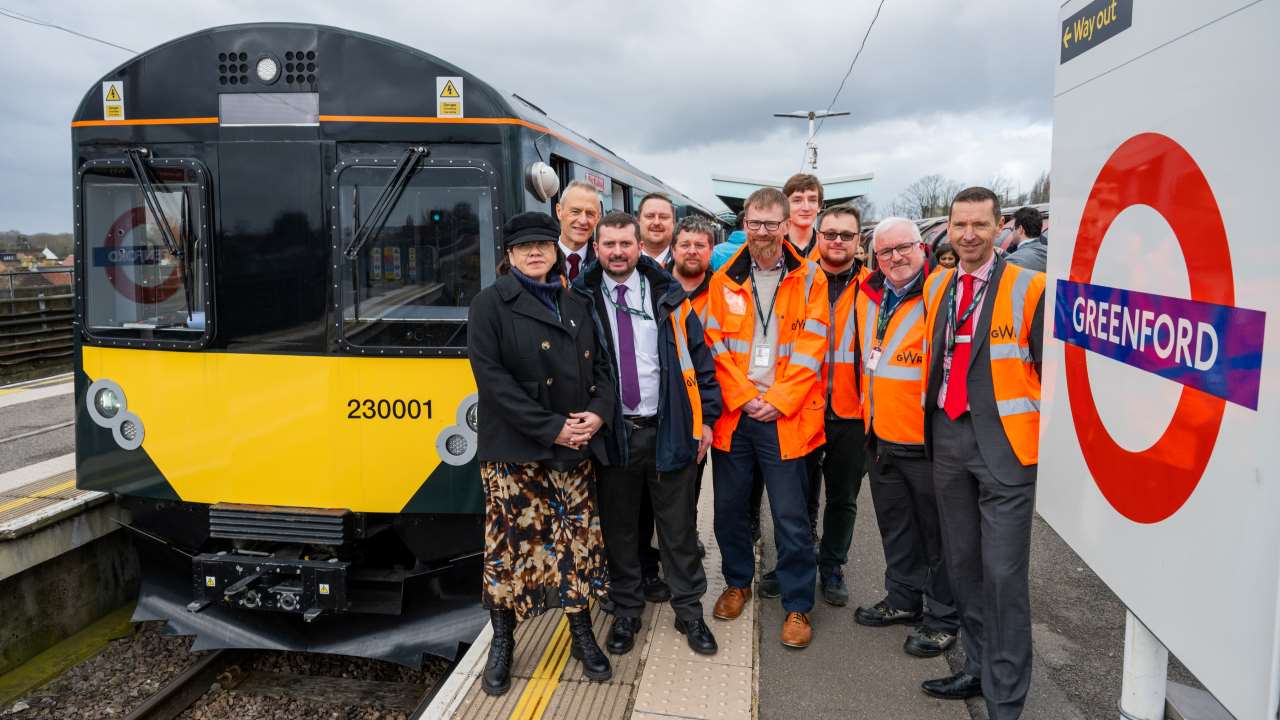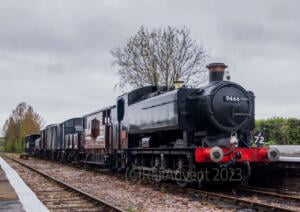On Monday 18 March 2023, trials officially started on the Great Western Railway’s fast-charge battery train.
A specialist group of GWR engineers have spent the last two weeks testing the technology to ensure the train is compatible with the charging points installed on the Greenford Branch.
This trial is breaking new ground and could change the way non-electrified national railway lines are operated across the UK in years to come.
Instead of using Diesel Multiple Units (DMUs), which have been the normal choice of motive power on most of the non-electrified UK branch lines since the 1960s, the new fast-charging electric technology would enable a far greener and more sustainable form of transport where a constant supply of overhead or track level electric power is not available.
It would also see massive savings in installing such electrical equipment over mile upon mile of lines that are not yet electrified.
There are currently 80-plus national branch lines in the UK that don’t have electric power, equating to roughly 2,000 miles of track.

This fast-charge battery train has been in the pipeline of the GWR for over 2 years.
In February 2022, GWR and Vivarail signed an agreement to trial the fast charging technology, with the hopes in the long term it would become successful and lead to a nationwide introduction of such trains.
By the end of 2022, Vivarail had gone into administration, at which point GWR decided it would buy the equipment, property and rolling stock of the FastCharge technology so it could continue to be adapted for future use.
The preliminary trials on the Greenford Branch have shown that a charging time of 3 ½ minutes is needed for the fast-charge train at West Ealing before returning to Greenford.
Simulations have been carried out on other GWR Branch lines too, where it has been calculated that 1,700 tons of CO2e could be saved per year by the introduction of more of these trains. This would greatly help meet the Government’s plan to make the UK net zero by 2050.
We want GWR to be at the forefront of the railway’s commitment to phase out diesel-only traction by 2040 and this demonstrates that we put our customers at the heart of everything we do This is why we took on the challenge and are taking an industry-leading approach in not only battery train operation, but the development of the fast-charge system. It’s important to remember this work has never been done before. It’s designed to test the capability and viability of the fast-charge technology – and demonstrates Great Western Railway taking a bold and broad approach towards replacing diesel-only trains with greener units.”
Mark Hopwood, GWR Managing Director.

We’re ambitious about making the railways even more sustainable and this trial, backed by Government funding, could pave the way for greener journeys for millions of passengers across the network. Rail is already the most environmentally friendly form of public transport and battery-powered technology will play an important role in further decarbonising it, helping us reach our net-zero target by 2050.”
Huw Merriman, Rail Minister.
I’m so excited to see this trial come to life, and it shows the true hard work and collaboration that has taken place between GWR, the Department for Transport and Network Rail. This is a crucial technology that if successful could pave the way for deploying across branch lines around the country, enabling the rail industry to hit our decarbonisation targets. The use of batteries for extended operation has typically been constrained by their range which meant widespread implementation has, until now, not been possible. It also negates the need for overhead electric lines which are expensive, time-consuming to install and impact the landscape.
Jo Grew, Network Rail Industry Programme Director for the Thames Valley.






Responses
What has happened. Why is the train not in use
The diesel DMU units are based ar Reading and drive to West Ealing every day to run the shuttle service to Greenford. How, and with what power type, will the electric trains get from Reading to West Ealing (if that is the case)?
Would be ideal for Great Western Railway to use and trial the Class 230 BMUs on the Slough-Windsor & Eton Central, Maidenhead-Bourne End & Marlow and Twyford-Henley-on-Thames branch lines. But it’s nice to see them in service and on trial on the West Ealing-Greenford branch line.
This seems to be a worthwhile initiative, and the relatively short West Ealing to Greenford branchline is certainly a good place to try it. I do wonder how long the batteries will last with constant fast charging though.
And as for “paving the way for deploying across branch lines around the country”, I’m not so sure. Some of these “branchlines” currently using diesel traction are 100 or miles long (eg Cumbrian Coast line, Central Wales and MidWales lines, Settle & Carlisle line). How many miles are feasible between fast charging stations? What will be the dwell time at these mid-route charging stations?
And over all this is the simple fact that Britain as a whole contributes less than 1% to the World’s CO2 emissions, so anything at all that the railways do to reduce their CO2 emissions will have absolutely no effect on the World’s climate.
There are plenty of short lines that run self-contained services (or could do) – some that spring to mind under 25 miles are:
St Ives, Falmouth, Newquay, Looe, Gunnislake, Avonmouth/Severn Beach, Ashford–Ore, Windsor, Greenford, Marlow, Henley, Reading–Basingstoke, Didcot–Oxford, Sudbury, Barton-on-Humber, Knottingley, Marston Vale, Stratford–Leamington, Windermere, Rose Hill Marple, New Mills, Preston–Ormskirk, Blackpool South and Morecambe.
These could all be suitable for battery trains (although some would arguably be better with full electrification).
Technology developed here can be sold abroad.
We’re hardly in a position to lecture other countries on their carbon footprint if we are not taking any action to reduce our own.
I sincerely hope they are more reliable than the 230’s on the Wrexham Bidston line. The staff are even less enthusiastic than the passengers!